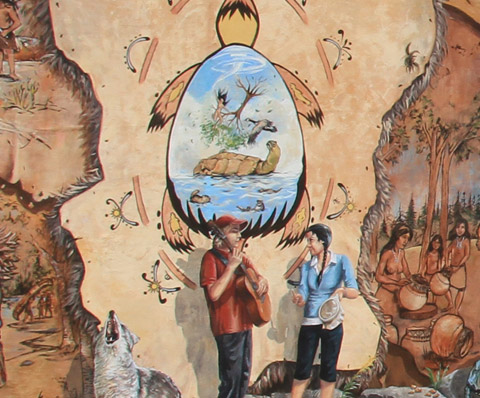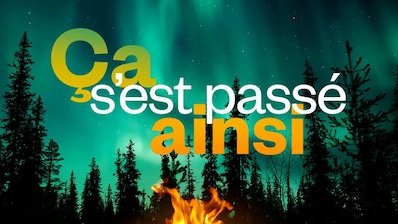

Wendake
Wendake is the only community in Canada where the Huron-Wendat Nation is present. This urban reserve, which has more than 2,200 inhabitants, covers an area of 3.78 km2 and is surrounded by the Quebec City borough of Haute-St-Charles.
Since time immemorial, the Huron-Wendat have occupied the estuary and valley of the majestic St. Lawrence River, up to the Great Lakes region. It was the Huron-Wendat Grand Chief Donnacona who welcomed the explorer Jacques Cartier to Stadacona during his voyage in search of the Indies in the 1530s.
Huron-Wendat Museum
Inaugurated in 2008, the Huron-Wendat Museum is a national institution of the Huron-Wendat people that oversees the conservation and development of their heritage.
Are you interested in visiting in Wendake? Look at the Tourism Wendake website to learn about what is offered in the community.
Les ours des Montagnes Rouges (The Bears of the Red Mountains)
Wendat tale written by Martine Latulippe and illustrated by Christine Sioui Wawanoloath. This is a TV5 monde production

Storytelling : An audio journey into the imaginary world of the First Nations
The Radio Canada podcast Ça s'est passé ainsi in collaboration with First Nations Artists and storytellersd.
Official description of the podcast: "These traditional Aboriginal tales, passed down from generation to generation, are anchored in the present by storytellers Édith Bélanger, Karine Échaquan, Kathia Rock and storyteller Alexandre Bacon. Their tales, tinged with magical realism, are an invitation to see the land, nature and the relationship between humans and animals in a different light. Radio-Canada: https://ici.radio-canada.ca/ohdio/balados/7605/contes-autochtones-nature-traditions-transmission/a-propos
: https://ici.radio-canada.ca/ohdio/balados/7605/contes-autochtones-nature-traditions-transmission/a-propos
Les deux frères et le vilain Carcajoux (The two brothers and the ugly wolverine)
Why do bears prefer to eat berries rather than humans? Thousands of years ago, on a remote island, two brothers with opposite characters give life to the animals we know today. While Koluscap shapes gentle animals, his brother Malsom creates a vicious wolverine... A merciless struggle begins within the siblings.
The tale of Tshakapesh
What was the first animal eaten by humans on earth? Find out in this seminal tale featuring Tshakapesh, a legendary hero to many Aboriginal nations. Young Tshakapesh survives the deaths of his parents, who were eaten by a mysterious bear. His encounter with a cannibal witch will be decisive for the future of human beings.
Windigo
This story is a folktale that comes from the Anishinaabe people during the Little Ice Age. This story is about a creature that was banished to the woods because they were too greedy and took too much from the rest of the community. This story was mostly told to small children to teach them how to behave and covers information about the Little Ice Age that took place in the 14th-19th centuries.
Mishta-Shipu, la grande rivière (The Great River)
How do love stories begin in the fur trade era? At the mouth of the Moisie River, Shaush meets Kananine, a strong-willed woman who refuses to marry the son of the village chief. After winning the triathlon, Saush, with mysteriously blue eyes, asks for Kananine's hand in marriage. She accepts, on one condition...
